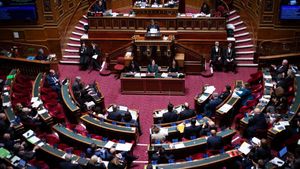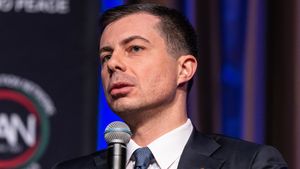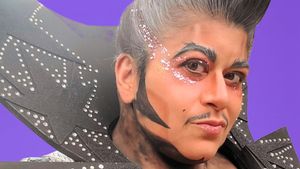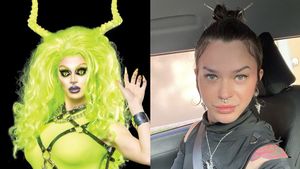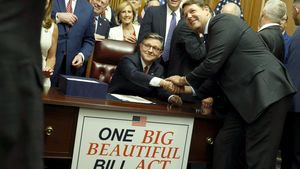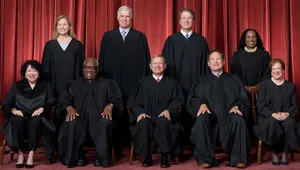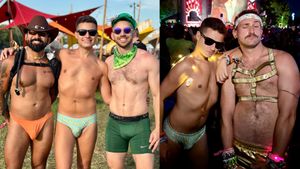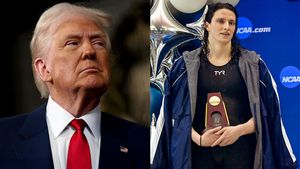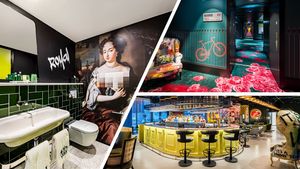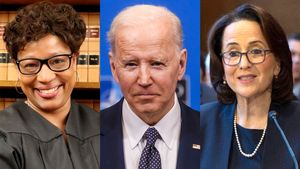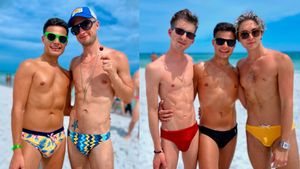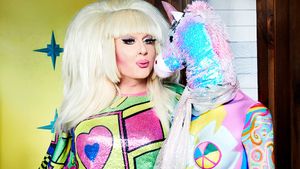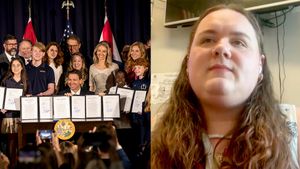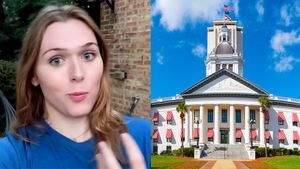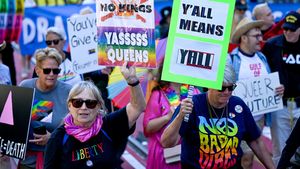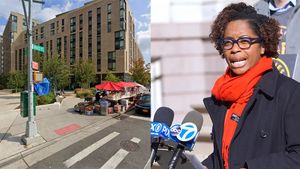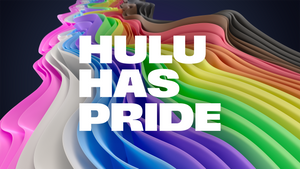This past year has indeed been transformative as the world confronted racism, hoping to break the systemic oppression experienced by underrepresented and underserved communities. At the same time, the wide-reaching and disproportionate impacts of the pandemic underscored the vulnerability of these communities. This has been a time of reckoning for corporate America. Industries have had to look in the mirror and face the lack of representation, opportunities, and support for minorities in their ranks. The fashion industry was no exception.
Fashion is a high-visibility business that may influence popular culture but has historically missed the mark in representing the country's diversity at all levels of its workforce.
I have led the Council of Fashion Designers of America since 2006, currently serving as its CEO. Before, my work was specific to HIV programming with MTV's Staying Alive Foundation and the Design Industries Foundation Fighting AIDS. As a gay college student mapping out my future career, I deliberately chose not to work in corporate America. Rather, I pursued work in nonprofit organizations where I thought my values and personality would be better aligned.
While I found a place of belonging, mentors, and allies along the way, no matter the work environment, I still found myself working alongside others unlike me. At each stage, there were situations where I experienced a lack of respect and acceptance because I was gay. Whether it was vendors, donors, or colleagues in the C-suite, I needed to focus on my self-confidence. It was a reminder that my contributions mattered and were equal to those of heterosexuals. It also required businesses and individuals to support, accept, and value people different from them.
At CFDA, I have begun to witness a long-overdue change in fashion. People at all levels of the industry are increasingly tuned in to the need for diversity, equity, and inclusion. We need to ensure a work environment of different cultures, values, and experiences, with guaranteed seats at the table for those unheard.
Much of the movement on equality centers on race and gender, and rightfully so. The CFDA and PVH Corp. recently released a report, "The State of Diversity, Equity, and Inclusion in Fashion." The study found that 60 percent of respondents thought their employers had implemented measurable actions to be more inclusive. Four out of five believed these actions to be nonperformative. Interestingly, though, 26 percent of people of color still thought their race prevented career advancement. As suspected, at the C-suite level, over half of executive roles and just under three out of four board positions are occupied by white men. People of color fill only 16 percent of executive functions and 15 percent of board seats.
CFDA is working to change that with IMPACT, a new program that identifies, connects, supports, and nurtures Black and brown creatives and professionals in fashion. The program furthers CFDA's mission to advance American fashion by including diverse talent in every facet of the industry's ecosystem. A fundamental component of IMPACT is a talent directory powered by the job platform Creatively.
Despite the stereotypes of fashion as inclusive for LGBTQ+ employees (especially cisgender gay men), the data from the CFDA and PVH report found otherwise: 18 percent of LGBTQ+ employees report that they would not recommend that others like them apply for a job in the fashion industry. LGBTQ+ employees say there is greater inaccessibility to the fashion industry for them than for straight employees.
LGBTQ+ employees report a high rate (65 percent) of experiencing microaggressions. These include the questioning of their competence, hearing insulting or disrespectful remarks about them or people they like, and feeling like they can't talk about their lives outside of work.
There are multiple types of barriers for LGBTQ+ team members. A Black lesbian, for example, has fewer opportunities available to her than a white male counterpart. Layer in her sexual identity, and she must work even harder to succeed. Intersectionality holds for many queer people working in fashion.
Firsthand, I have seen gay colleagues in fashion dismissed as unserious and called frivolous because of the way they dress. I have heard comments from fashion leaders disparaging trans designers as "not real designers" or claiming collections should be divided by gender and that nonbinary collections are irrelevant.
Many factors contribute to the biases and challenges in the fashion industry. Some will find it easy to link these to the LGBTQ+ community. Queer culture, from taste to aesthetics, might not fit the image of a brand. Fashion jobs are often found through personal networks, and with a reliance on referrals, many LGBTQ+ job seekers lack relationships beyond their core circle. Other factors include the lack of mentorship, the high cost of living in New York (America's fashion capital), and low pay.
The opportunities to confront challenges continue to exist. Through their research, CFDA and PVH identified six areas of intervention and opportunity: awareness, access, promotion, advocacy, compensation, and belonging. Systemic change requires sustained coordination between individuals, companies, and the ecosystem of an industry.

Tom Ford, Kerby Jean-Raymond, and Steven Kolb. Photo by Jeil Rasmus/BFA
Individuals can and should engage in unconscious bias training to make necessary changes in their assumptions on LGBTQ+ colleagues. Gender identification is often an assumption based on the genetic makeup of a person. Taking time to know and accept a colleague's gender identity can promote belonging, from pronoun use in office memos and email signatures to signage on restroom doors. Coworkers can only benefit by creating safe spaces for respectful conversations, mentoring and advocating for people of different backgrounds, speaking up, and enlisting others to be more involved.
The first thing companies need to understand is who works for them. Tracking representation baselines will hold leadership accountable where they fall short on inclusion. A company committed to engaging with various cultural backgrounds begins this mission by recruiting from nontraditional sources and providing precise and transparent promotion criteria. Developing inclusive work events and establishing employee resource groups help build community. Corporate participation in Pride events has become standard, and while it may seem commercial to some, for LGBTQ+ team members, it can represent appreciation and allyship.
Businesses know the power of our dollar, and recognizing LGBTQ+ corporate inclusion helps build a business. Queer knowledge and insight inside companies will reach customers year-round, not just during Pride. Inclusion means having internal teams and LGBTQ+ photographers and stylists as well as gender-nonconforming models on the runway and in campaigns.
Organizations like the CFDA, with a mission to promote American fashion, hold a responsibility to be more than a trade group focused on fashion's economic growth. Through panels and programming with collaborators and partners like Google and PVH, as well as storytelling on CFDA.com and across social media, we bring visibility to the talent and contributions of the community. Through events like Seventh on Sale with Vogue, the 30th anniversary of Susanne Bartsch's Love Ball, and sponsorships like Jeffrey Cares, the CFDA has raised funds for critical causes like HIV awareness and prevention and trans health care. Grants support organizations such as the Anti-Violence Project, Brooklyn Community Pride Center, and GMHC. This year is CFDA's 25th anniversary of our student scholarship program, and a new Design for Justice Scholar Award has been introduced. Centered on empowering the voice of fashion's future, two scholarships will be awarded to students displaying strength in making change through design inclusivity, fashion activism, social justice, and equitable fashion systems.
The fashion industry knows what problems exist, and the path to greater diversity, equity, and inclusion is more evident than ever before. American fashion was hit hard by the pandemic and the events of last year. As the fashion sector rebuilds itself, there is an opportunity and responsibility to create a new way of working that welcomes everyone, not just a privileged few, to join an industry that many aspire to and that allows us to be genuine and transparent - with CFDA leading the way.
Steven Kolb is the CEO of the Council of Fashion Designers of America. Follow him on Twitter, @stevenkolb.
This commentary is part of Out's 2021 Fashion Issue. The issue is out on newsstands on August 16, 2021. To get your own copy directly, support queer media and subscribe -- or download yours for Amazon, Kindle, Nook, or Apple News.




